*NURSING > QUESTIONS & ANSWERS > CRC Exam Comprehensive study cards for the Rehabilitation Counseling Exam, rated A+ Assistive Tech (All)
CRC Exam Comprehensive study cards for the Rehabilitation Counseling Exam, rated A+ Assistive Tech
Document Content and Description Below
CRC Exam Comprehensive study cards for the Rehabilitation Counseling Exam, rated A+ Assistive Technology - ✔✔-any item, piece of equipment, or product system, whether acquired commercially ... off the shelf, modified, or customized that is used to increase, maintain, or improve functional capabilities of individuals with disabilities Augmentative and Alternate Communication - ✔✔-A process in which the counselor identifies devices and techniques that the client can use to improve their communication Durable Medical Equipment - ✔✔-Medicare term for reusable physical supplies such as wheelchairs and hospital beds that are ordered by the provider for use in the home; reported with HPCPS Level II codes. Philosophical Principles that Define the Client's Role - ✔✔-a) the client must be involved b) the client must recognize their own beliefs and feelings and how they affect their ability to function c) the client must be willing to accept help What is the purpose of anti psychotics? - ✔✔-Used to treat psychiatric conditions by altering the chemistry of the brain What are the five levels of exertion? - ✔✔-1) Sedentary: less then 6lbs regularly and no more than 10lbs at a time 2) Light: less than 11lbs regularly and no more than 20lbs at a time 3) Medium: 26lbs regularly and no more than 50lbs 4) Heavy: less than 50lbs regularly and no more than 100lbs 5) Very Heavy: 50lbs regularly and more than 100lbs 7 Characteristic of "Universal Design" - ✔✔-1) equitable use 2) flexibility 3) intuitiveness 4) low physical exertion 5) perceptible information 6) size & space 7) tolerance for error Universal Design - ✔✔-design of products and environments to be usable by all people, to the greatest extent possible, without the need for adaptations or specialized design. Perceptible Information - ✔✔-Principle Universal Design; services or products are made to provide information in a way that anyone can access despite abilities or limitations. Size & Space - ✔✔-Principle Universal Design; a service or product is designed so anyone can use it, interact with it despite limitations such as grip strength, moving, reaching, etc. Tolerance for Error - ✔✔-Principle Universal Design; product or service is designed do that user mistakes are hard to make 5 Principles of Ethical Behavior - ✔✔-1) Autonomy 2) Beneficence 3) Non-maleficence 4) Justice 5) Fidelity Autonomy - ✔✔-independence; self-determination; right to personal choice Beneficence - ✔✔-intending to do good and act in the best interest of the client Nonmaleficence - ✔✔-do no harm Justice - ✔✔-actin in a fair an impartial way towards all clients not letting "favorites" or biases influence the service provided Fidelity - ✔✔-faithfulness to one's promises or obligations; not making insincere statements or impossible promises Treatment Protocol for Alzheimer's - ✔✔-No cure but exercise, nutrition, physical therapy can help. Need visual monitoring to stay safe and need frequent reminders and queues to reduce anxiety Huntington's Disease - ✔✔-A genetic disorder that surfaces around age 30 causing anxiety and physical weakness as well as psychiatric and cognitive issues Muscular Dystrophy - ✔✔-An umbrella term for a degenerative muscle condition Antidepressants - ✔✔-Used to treat clinical depression; typically work on the neurotransmitters serotonin, nor-epinephrine, and/or dopamine 4 Etiologies of Medical Disorders - ✔✔-1) Congenital Defects 2) Degenerative Disorders 3) Acquired Disorders 4) Unknown Origin Striated Muscle - ✔✔-controls voluntary movement Smooth Muscle - ✔✔-Control involuntary movement Cardiac Muscle - ✔✔-Comprises the heart Physiatrists - ✔✔-A Dr with expertise in body mechanics Orthopedists - ✔✔-A Dr who specializes in skeletal disorders Tendons - ✔✔-a bodily tissue that connects a muscle to the joint 4 Categories of Rheumatoid Disease - ✔✔-1) Rheumatoid Arthritis 2) Spondylitis 3) Osteoarthritis 4) Osteoporosis Rheumatoid Arthritis - ✔✔-an autoimmune disease that leads to inflammation of the joints and surrounding tissues Spondylitis - ✔✔-linked to genetics and affects more males than females; causes inflammation of joints between the spinal bones, and joints between spine and pelvis, eventually causes the affected spinal bones to join together. Osteoarthritis - ✔✔-most common joint disorder, due to aging and "normal" wear and tear on a joint Osteoporosis - ✔✔-he thinning of bone tissue and loss of bone density over time When assessing functional capacity the two major components are... - ✔✔-a) Behavior: the client's past and present actions b) Level of skill: the difficulty of activities that the client can complete successfully Equitable - ✔✔-Principle Universal Design: a product or services provides the same benefit to any user Flexibility - ✔✔-Principle of Universal Design: a service or product is made to work in any reasonable way Intuitiveness - ✔✔-Principle of Universal Design; a product or service is made to be used with little or no training Low Physical Exertion - ✔✔-Principle of Universal Design: a product or service can be used comfortably, easily and safely Occupational Therapy - ✔✔-Restore, maintain, or teach skills of daily living and work; Focus on motor skills and mental acuity Physical Therapy - ✔✔-Restore, maintain and promote overall fitness; Focus on strength, endurance, and range of motion Therapeutic Recreation - ✔✔-Improve and maintain overall well-being: physical, mental and emotional; Focus on using leisure/recreational activities to increase/maintain abilities Speech Therapy - ✔✔-helps people with speech and language problems to speak more clearly. Vocational Therapy - ✔✔-A special program designed to help those with a physical or mental impairment to obtain, prepare for, engage in, or retain a job. Services are provided through the division of vocational rehabilitation. This program is supported by federal and state funds. Principles of Treatment Planning - ✔✔-a) Tailor treatment to the specific needs of client b) Treat ALL factors that affect the overall well-being of the client c) Ensure that treatment lasts as long as the client needs it d) Give the client the information needed to create and implement the treatment plan Functional Capacity - ✔✔-the ability to perform necessary tasks; what a person is actually capable of doing Functional Assessment Evaluation - ✔✔-(FCE): the assessing of client skills and the performance of certain tasks 3 Types of Environmental Barriers - ✔✔-1) Architectural 2) Service 3) Societal Interventions - ✔✔-any technique, strategy, or service that is intended to treat/diminish a specific problem Orthotics - ✔✔-medical term used to describe a device that helps a person move or supports their body Philosophical principles that define the counselor's role - ✔✔-a) recognition of and focus on client's strengths b) recognition and development of client potential c) working with others to provide necessary services d) recognition that the client is part of a system (family/community) and that the system may affect the rehabilitation process e) ensure that the client continues to make progress towards goals Steps of Strategic Planning - ✔✔-1) identification of goals 2) assessment of counselor ability to meet these goals 3) outlining of specific techniques that can be used to achieve 4) carry out the chosen intervention 5) evaluate progress on a continuous basis Identified Patient - ✔✔-The family member whose symptoms or behaviors are stated by the family as the reason for coming to therapy. Third-Party Payment - ✔✔-Payments for healthcare services made by an insurance company or health agency on behalf of the insured Referral Fee - ✔✔-A fee paid for recommending or referring a potential client or customer CPT - ✔✔-Current Procedural Terminology - a systematic medical listing and coding of procedures and services. Skills needed to coordinate services - ✔✔-1) communication- ability to transfer information 2) concatenation- ability to ensure the client has access to needed professionals 3) continuity- ability to ensure that all involved are working as a team 3 Types of Accommodation - ✔✔-1) Physical Accommodation- environmental 2) Resource Accommodation- a personal assistant 3) Equipment Accommodation- special tools Solving Teamwork Problems - ✔✔-a) using conflict resolution techniques as problems arrive b) re-evaluation and defining of individual team member roles c) re-evaluation and redesigning of team goals Conservation - ✔✔-Piaget learning concept that is acquired between the ages of 7-11 where a child understands that volume, weight, and mass of an object stays the same even when the shape changes Concrete Operational - ✔✔-The Piagetian stage for when children between the ages of 7-11 understand conservation of matter Kohlberg - ✔✔-Theory of Moral Development: three phases Preconventional - ✔✔-Kohlberg's first phase: two parts- a child doing what is right to avoid punishment; an older child doing what is right as way to avoid consequences and because it is in the interest of the other Maslow's Hierarchy of Needs - ✔✔-Pyramid of priority of needs base to top: physiological needs, safety needs, social needs, esteem needs, self actualization Pavlovian Methods in the Military - ✔✔-The use of transmarginal inhibition (TMI) techniques are used to re-program solider responses to discomfort of pain, fear Transmarginal Inhibition - ✔✔-An organism's response to overwhelming stimuli, first detailed by Pavlov Steps of Work-Hardening - ✔✔-1) assessment of client's functional ability 2) Job analysis to discern the needed skills for employment 3) Identify options for employment 4) identification of specific accommodations, modifications &/or changes that will need to be made Erik Erikson - ✔✔-Stages of Human Growth & Development: 8 stages that refer to how a person interacts with their environment. Each stage is a "crisis" which needs to be resolved before a person can successfully move to the next stage. MBTI - ✔✔-Myers-Briggs Type Indicator: psychological test based in Junian theory; four categories 1) Extroversion - Introversion: Where do you prefer to focus your attention?: Where do you get your energy? 2) Sensing - Intuition: How do you prefer to take in information? 3) Thinking - Feeling: How do you make decisions? 4) Judging - Perceiving: How do you deal with the outer world? Purpose of Rehabilitation Services Administration - ✔✔-Division of the U.S. Department of Education's Office of Special Education and Rehabilitation Services; meant to ensure that people with disabilities have access to services needed to function and work and in daily life Purpose of Office of Special Education Programs - ✔✔-Ensures that children with disabilities have access to an education that is tailored for the specific needs Temporary Assistance for Needy Families - ✔✔-TANF: helps low income families obtain basic resources Describe "Insurance" - ✔✔-An organization agrees to cover the costs of the item insured in trade for dues and fees Purpose of State Workers' Compensation - ✔✔-An insurance program available to employers to cover costs when a worker is hurt on the job Skills for Job Retention - ✔✔-a) ability to prioritize b) ability to function under pressure c) effective communication d) ability to make decisions e) ability to problem solve f) ability to be part of a team 1918 Smith Sears Act - ✔✔-Authorized Federal Board for Vocational Education to organize and offer programs of vocational rehabilitation for veterans with disabilities. Employment as a result of vocational rehabilitation training had to be a feasible possibility. 1920 Smith Fess Act - ✔✔-The civilian vocational rehabilitation [act] program. Counseling, training, prosthetic appliance and job placement to physically disable from industrial injuries. Provided federal funds to states on a 50-50 matching basis. What year was NRA founded? - ✔✔-1925 1935 Social Security Act - ✔✔-established three types of federal provisions public assistance, social insurance and health/welfare services; also established voc-rehab as a permanent program 1936 Randolph Sheppard Act - ✔✔-joblessness among the blind must be reduced through a robust program to assist blind people in the establishment and operation of cafeteria, concessions, and vending businesses on federal, state, municipal and potentially private property 1938 Wagner O'Day Act - ✔✔-Federal government will purchase items produced in Rehabilitation Workshops 1943 Barden-Lafolette Act - ✔✔-made substantial changes in the federal/state program of rehabilitation; broadened the program's financial provisions, offered a comprehensive definition of vocational rehabilitation, expanded services to include physical restoration, and each state had to submit a written plan for approval by the federal agency as to how federal/state dollars would be used; expansion of services included on a limited basis person who were mentally handicapped and mentally ill; fostered separate agencies for general rehabilitation and rehabilitation of person who were blind. 1954-1965 - ✔✔-"The Golden Years" 1954 Amendments-what did they do? - ✔✔-reshaped the roles of the federal and state government in the rehabilitation program; established the basis for a working relationship between public and private rehabilitation and expanded the role of the state agency; established funding sources for (1) college and university training of rehabilitation professionals; (2) improvement and remodeling of rehabilitation facilities; and (3) research and demonstration grants; increased federal funding to states (3 federal dollars for each 2 dollars from the state); increased services to persons with mental retardation and mental illness through items (2) and (3) above, along with agency expansion and improvement grants. Rehabilitation Act of 1973 - ✔✔-Prohibits discrimination of hiring persons with disabilities by federal agencies and federal contractors. RA of 1973 Section 501 - ✔✔-focused on the federal government's hiring practices RA of 1973 Section 502 - ✔✔-created the Architectural and Transportation Barriers Compliance Board (ATBCB) to enforce standards set under the Architectural Barriers Act of 1968 RA of 1973 Section 503 - ✔✔-prohibited discrimination in employment on the basis of physical or mental handicap on the part of businesses with federal contract or their subcontractors RA of 1973 Section 504 - ✔✔-prohibited discrimination on the basis of physical and mental handicaps in programs receiving federal funds; also established the Client Assistance Demonstration Projects (CAPS) to provide assistance in informing and advising clients and applicants of all available benefits under the Rehabilitation Act; emphasized priority of services for persons with the most severe handicap and the development of the Individual Written Rehabilitation Plan (IWRP); established by statute the Rehabilitation Services Administration. 1990 Americans with Disabilities Act - ✔✔-requires employers and public facilities to make "reasonable accommodations" for people with disabilities and prohibits discrimination against these individuals in employment. 1992 ADA Amendment - ✔✔-stressed respect for ind dignity, personal responsibility, self determination, and pursuit of meaningful careers based on informed choice 1998 ADA Amendment - ✔✔-purpose is to empower ind w/ disabilities to maximize employment, economic self-sufficiency, independence and inclusion and integration into society 2009 ADAAA Amendments - ✔✔-reiterate who is covered by the ADA civil rights protections. It revises the definition of "disability" to more broadly encompass impairments that substantially limit a major life activity. It also states that mitigating measures, including assisstive devices, auxiliary aids, accommodations, medical therapies and supplies (other than eyeglasses and contact lenses) have no bearing in determining whether a disability qualifies u [Show More]
Last updated: 1 year ago
Preview 1 out of 74 pages

Buy this document to get the full access instantly
Instant Download Access after purchase
Add to cartInstant download
We Accept:

Reviews( 0 )
$12.00
Document information
Connected school, study & course
About the document
Uploaded On
Mar 17, 2023
Number of pages
74
Written in
Additional information
This document has been written for:
Uploaded
Mar 17, 2023
Downloads
0
Views
23






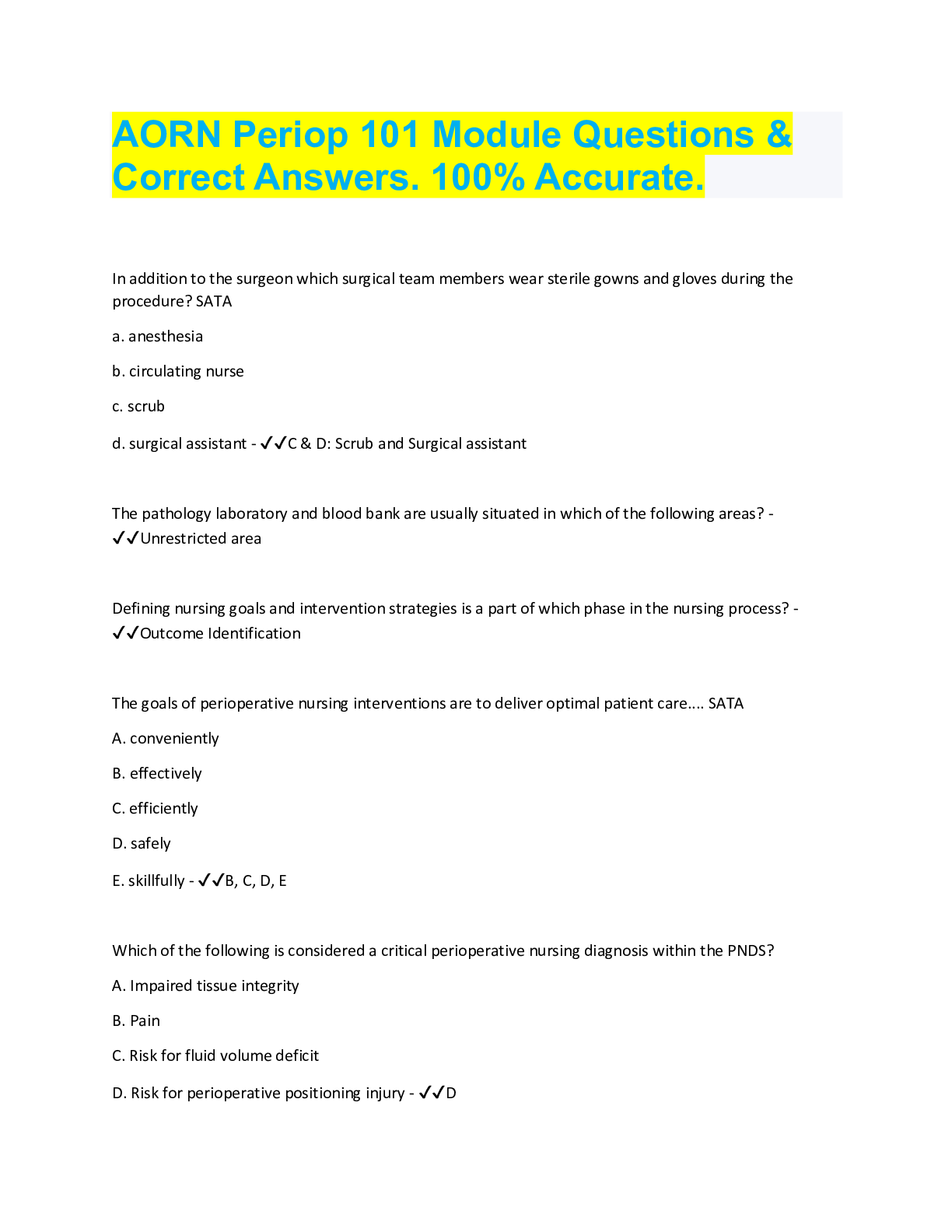





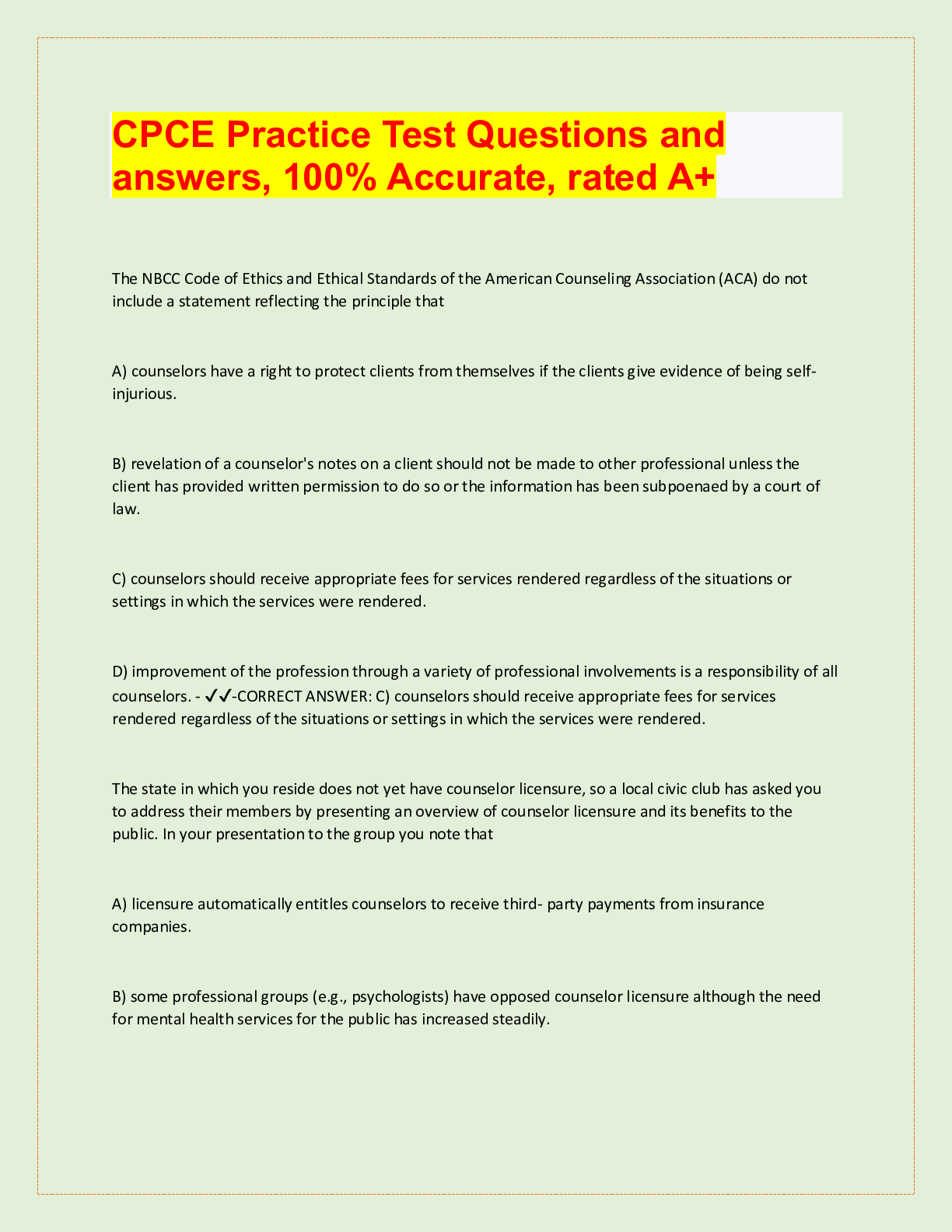


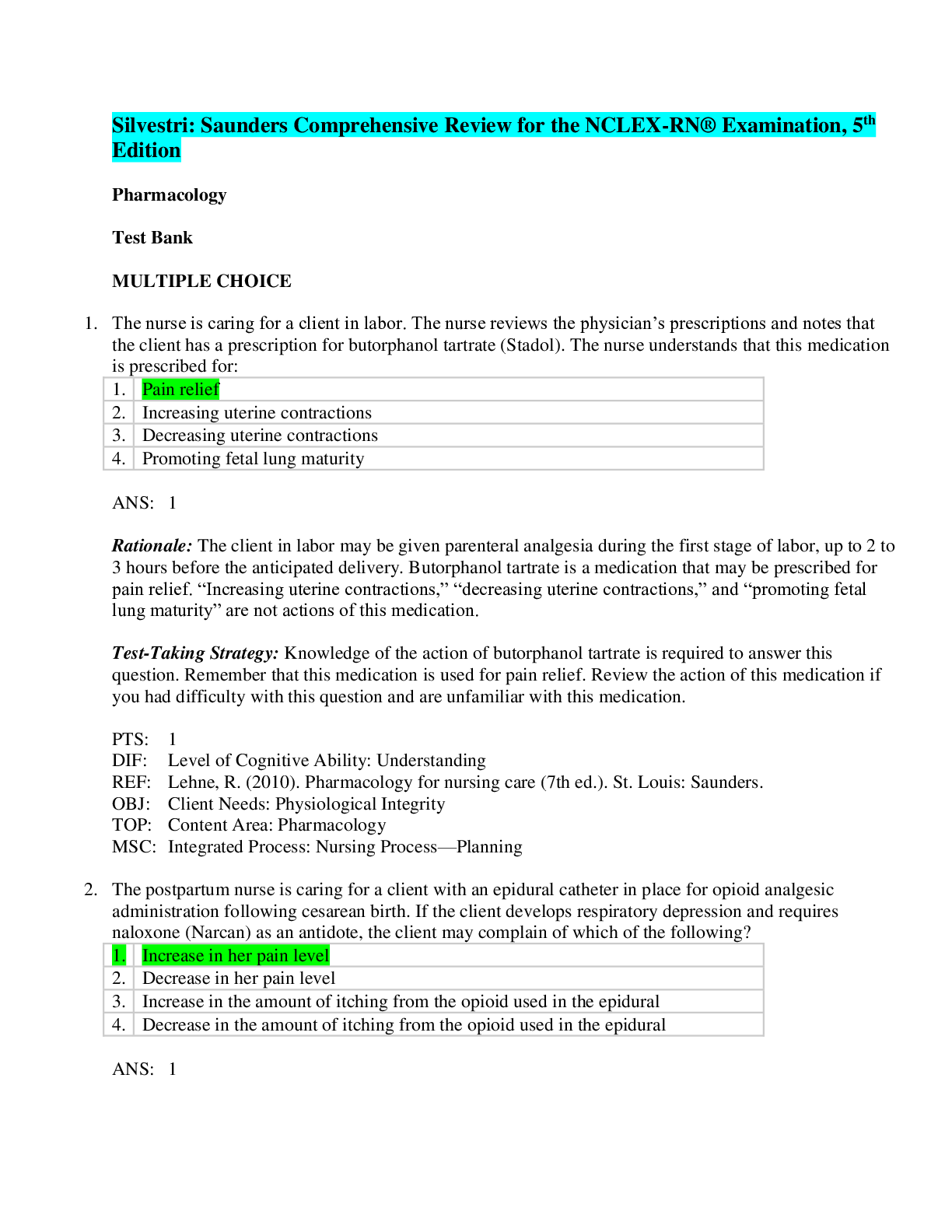
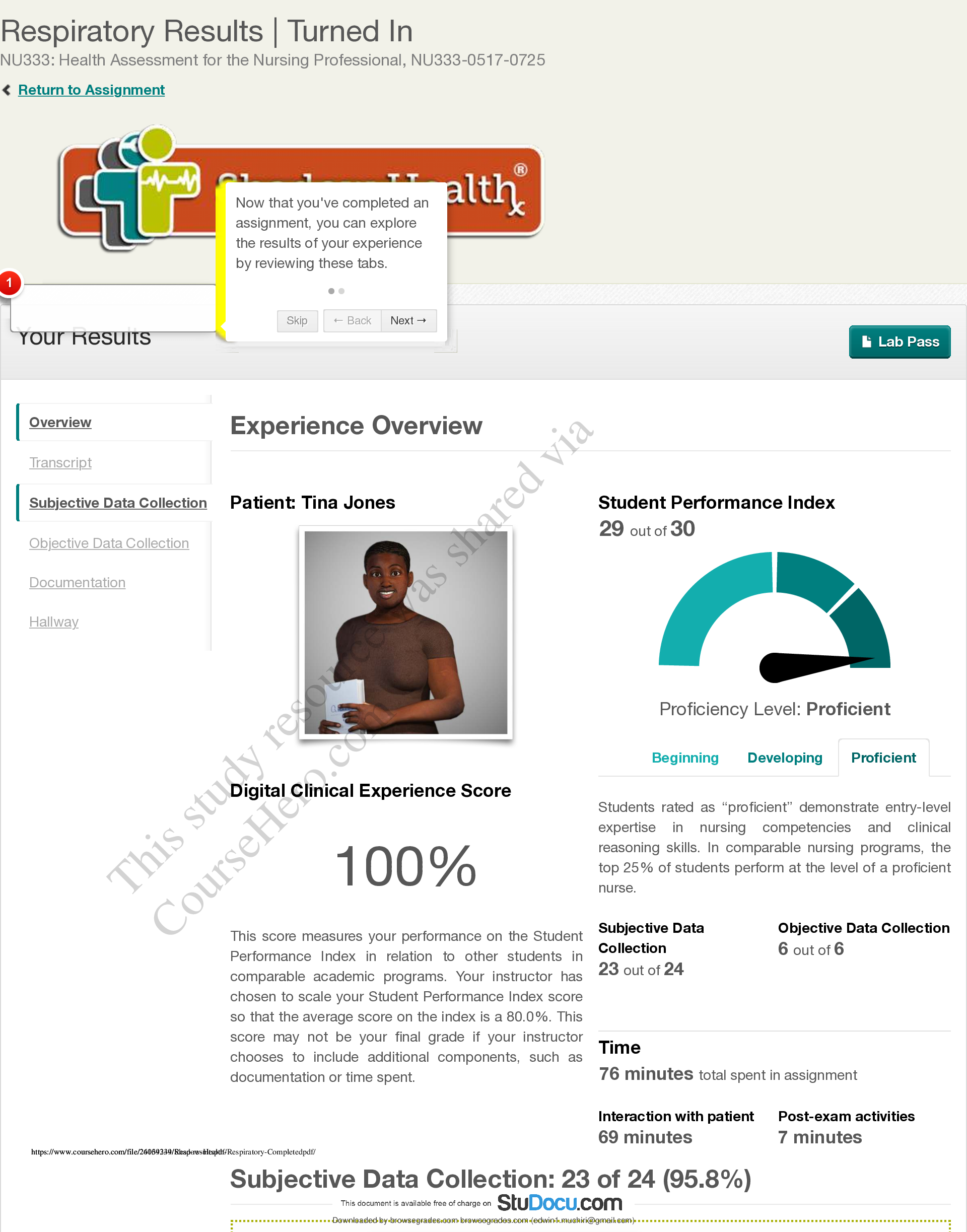

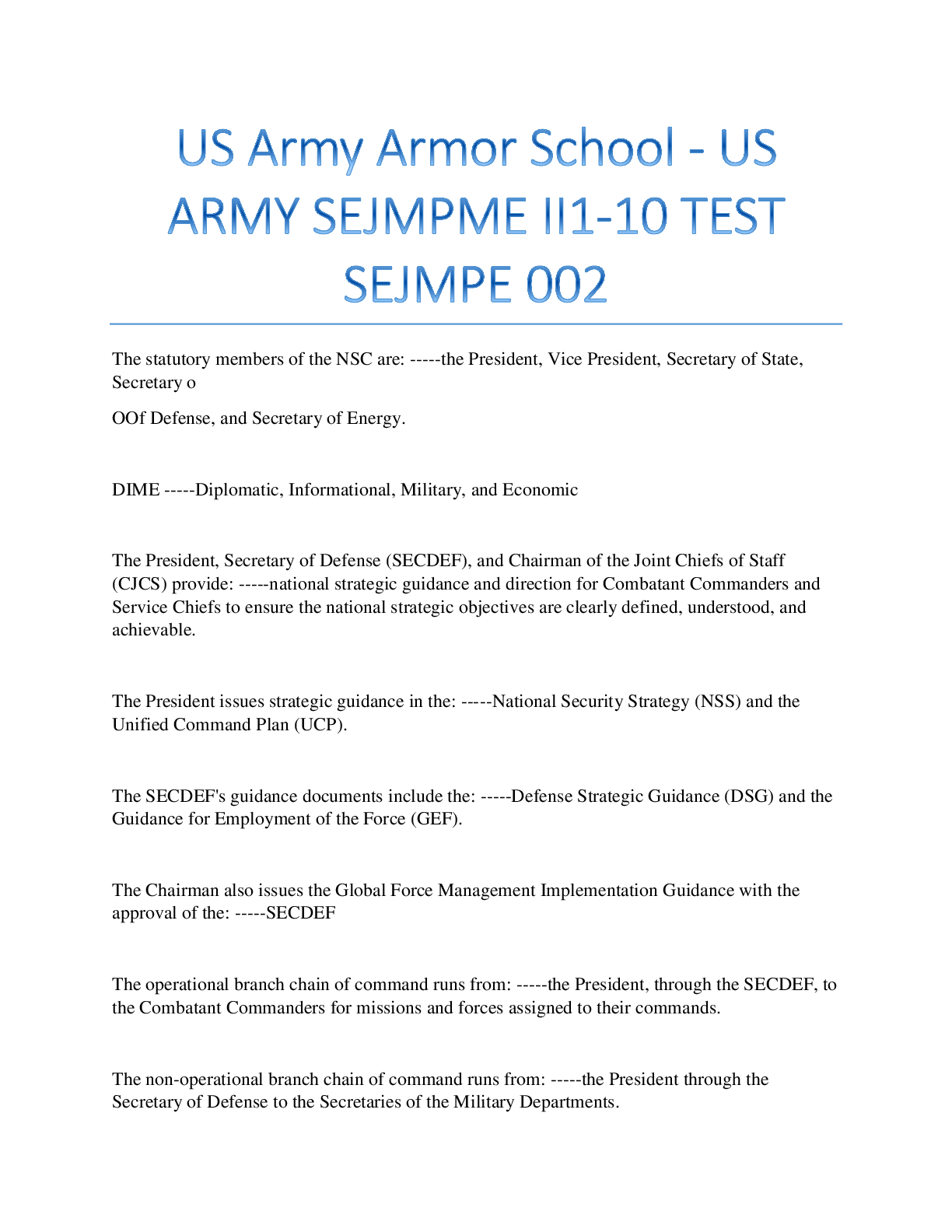

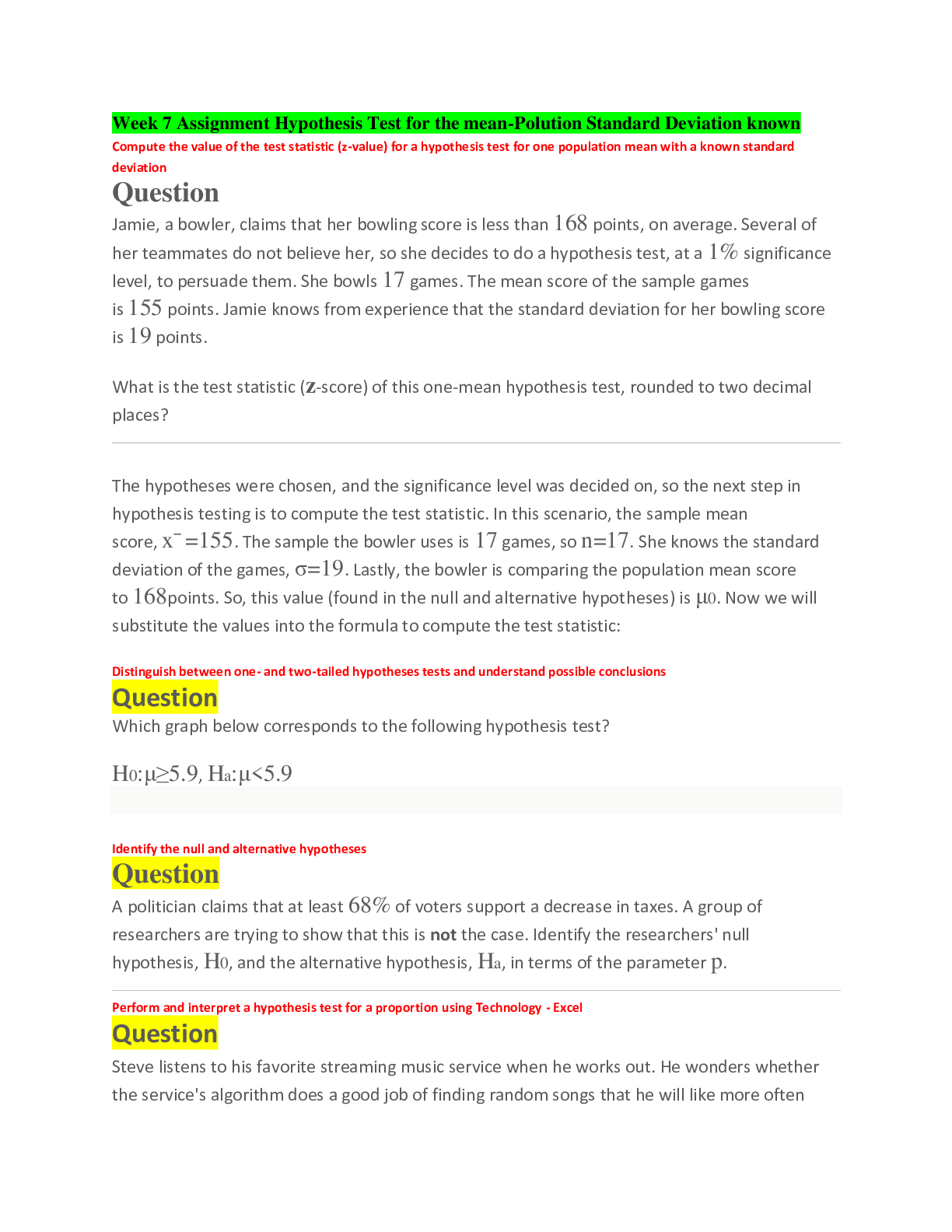

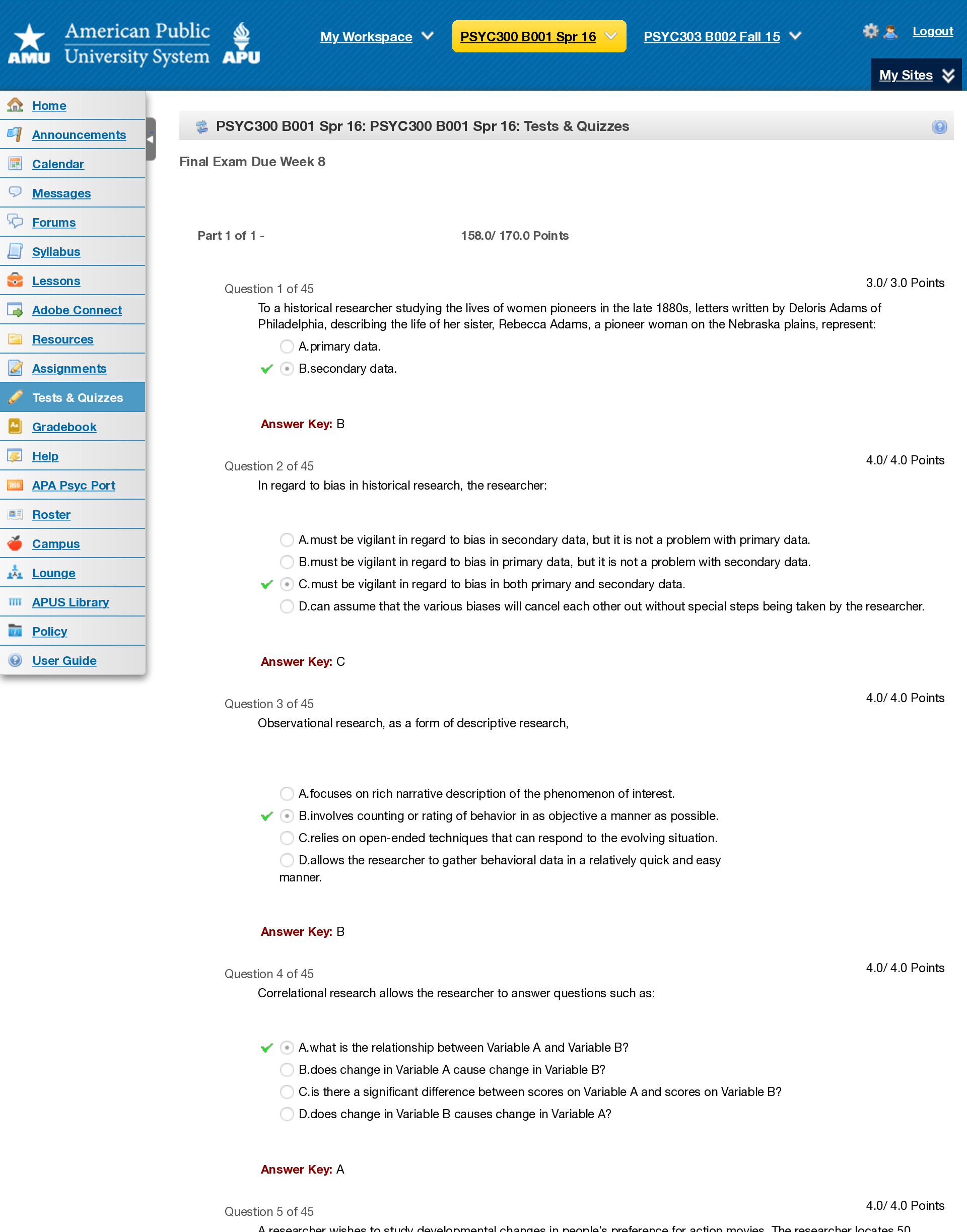
.png)

